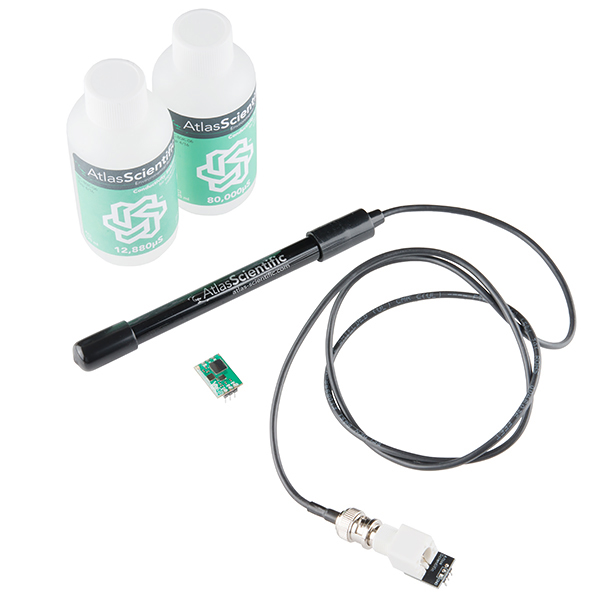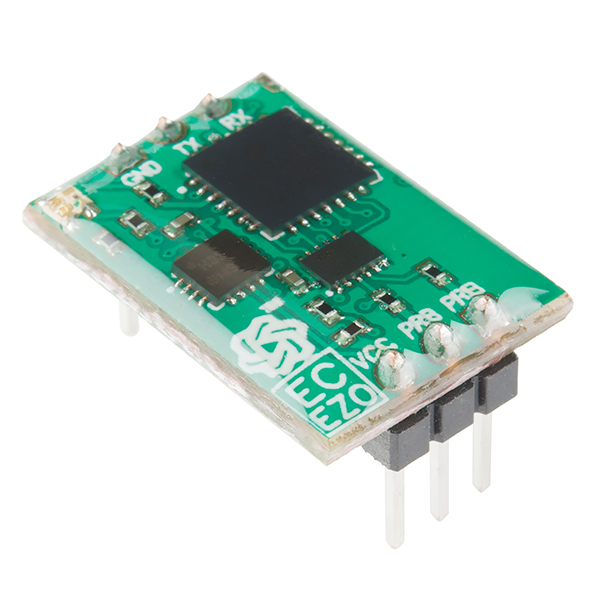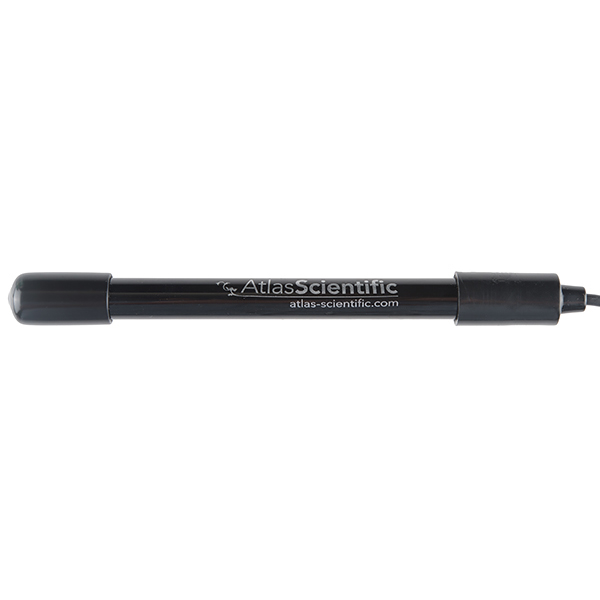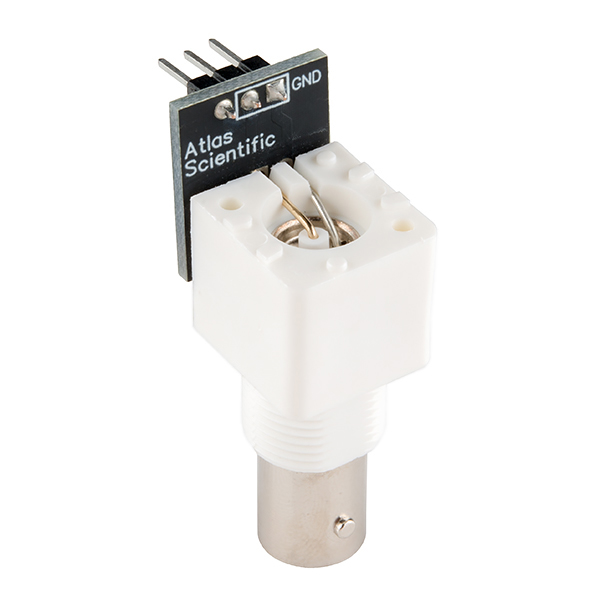Electrical Conductivity Kit
Atlas Scientific is on a mission to make high-quality sensors for environmental monitoring available to everyday hackers and makers. All of their kits are easy to calibrate and connect to your microcontroller-based project.
When was the last time you measured something in microsiemens? Well isn't it about time you did? Siemens are the SI unit for measuring something called conductance which is simply the inverse of an element's resistance, and it can tell you a lot about a substance! The Atlas Scientific Conductivity Kit comes with everything you need to get your lab-grade embedded conductivity system up and running! The included epoxy/platinum conductivity probe is accurate enough for lab work, but rugged enough for long-term field use.
Simply connect the probe to the conductivity circuit using the included BNC connector breakout, do some quick calibration with the included calibration solutions and you're ready to measure conductivity, total derived solids (referenced to KCL) and salinity! Salinity values are derived from the Practical Salinity Scale (PSS-78) and more information can be found in the datasheet.
This kit includes the K1.0 conductivity probe and the EZO™ Conductivity Circuit, when combined are accurate from 0.55 µs/cm to 500,000+ µs/cm and is best deployed in brackish water. The included calibration solutions will help you dial this sensor in (it's really easy, we promise).
If you've ever had to test or monitor the conductivity of aquariums, hydroponic gardens, soil samples or strong reducing agents, then you know that building and maintaining an accurate probe system has never been this easy.
- EZO™ Conductivity Circuit
- Platinum Conductivity Sensor (K=1.0)
- 2 x 125ml (4oz) calibration solutions
- Female BNC connector
- BNC connector breakout board
- Conductivity Circuit decal
- Measuring Surface: Platinum black coated platinum
- Body material: Epoxy
- Max Temperature: 0-70 Degrees C
- Max PSI: 1379 kPa (200PSI)
- Conductivity readings +/- 2μs/cm
- Full Conductivity range from 0.55 µs/cm to 500,000+ µs/cm
- Temperature dependent or temperature independent readings
- Total dissolved solids (TDS) referenced to KCL
- Salinity is derived from the Practical Salinity Scale (PSS-78)
- Data output is a comma separated string: μs, TDS, Salinity
- Single reading or continuous reading modes
- Simple RS-232 connectivity (voltage swing 0-5v)
- Simple instruction set consisting of only 6 (not including calibration) commands
- 3.3V - 5V operational voltage
- Datasheet (EZO™ Conductivity Circuit)
- Wiring Diagram
- Raspberry Pi Sample Code
- Arduino Sample Code
- Arduino Mega Sample Code
- Product Page
Electrical Conductivity Kit Product Help and Resources
Core Skill: Programming
If a board needs code or communicates somehow, you're going to need to know how to program or interface with it. The programming skill is all about communication and code.
Skill Level: Rookie - You will need a better fundamental understand of what code is, and how it works. You will be using beginner-level software and development tools like Arduino. You will be dealing directly with code, but numerous examples and libraries are available. Sensors or shields will communicate with serial or TTL.
See all skill levels
Core Skill: Electrical Prototyping
If it requires power, you need to know how much, what all the pins do, and how to hook it up. You may need to reference datasheets, schematics, and know the ins and outs of electronics.
Skill Level: Noob - You don't need to reference a datasheet, but you will need to know basic power requirements.
See all skill levels
Comments
Looking for answers to technical questions?
We welcome your comments and suggestions below. However, if you are looking for solutions to technical questions please see our Technical Assistance page.
Customer Reviews
4 out of 5
Based on 1 ratings:
1 of 1 found this helpful:
Not working
I boughtbthis and a pH sensor kit, but i cant get this working. Only once it started, and then it filled the screen with unreadable text. Baud was set to 38400 as default. PH kit working atleast.... And i was not very happy with the 70£ toll fee, total cost was 600$
I'm sorry about your issues. Please contact our support team for assistance. We can get you in touch with someone who can help.
As for the cost associated with customs, duties, and taxes, unfortunately we have no control over individual country's fees. I'm sorry there is nothing more we can do for you there.





Got it working. Seems to work well. Have to tell it the room temperature to get it precise...
Took me a while to figure out the correct baud rate though. The instructions at Atlas Scientific say to use 9600 baud, but that doesn't work. Came back to here and found instructions that say 38400 baud and that worked.
BTW: See Atlas Scientific website for many details. You can leave the probe submerged up to the BNC connector indefinitely...
Can I use this probe on sea water 24/7?
Hi! I'm really considering getting this EC sensor for a project I'm doing. Would this sensor survived if it were left resting in still water? I would love to have the ability to periodically take readings without having to physically interact with the sensor.